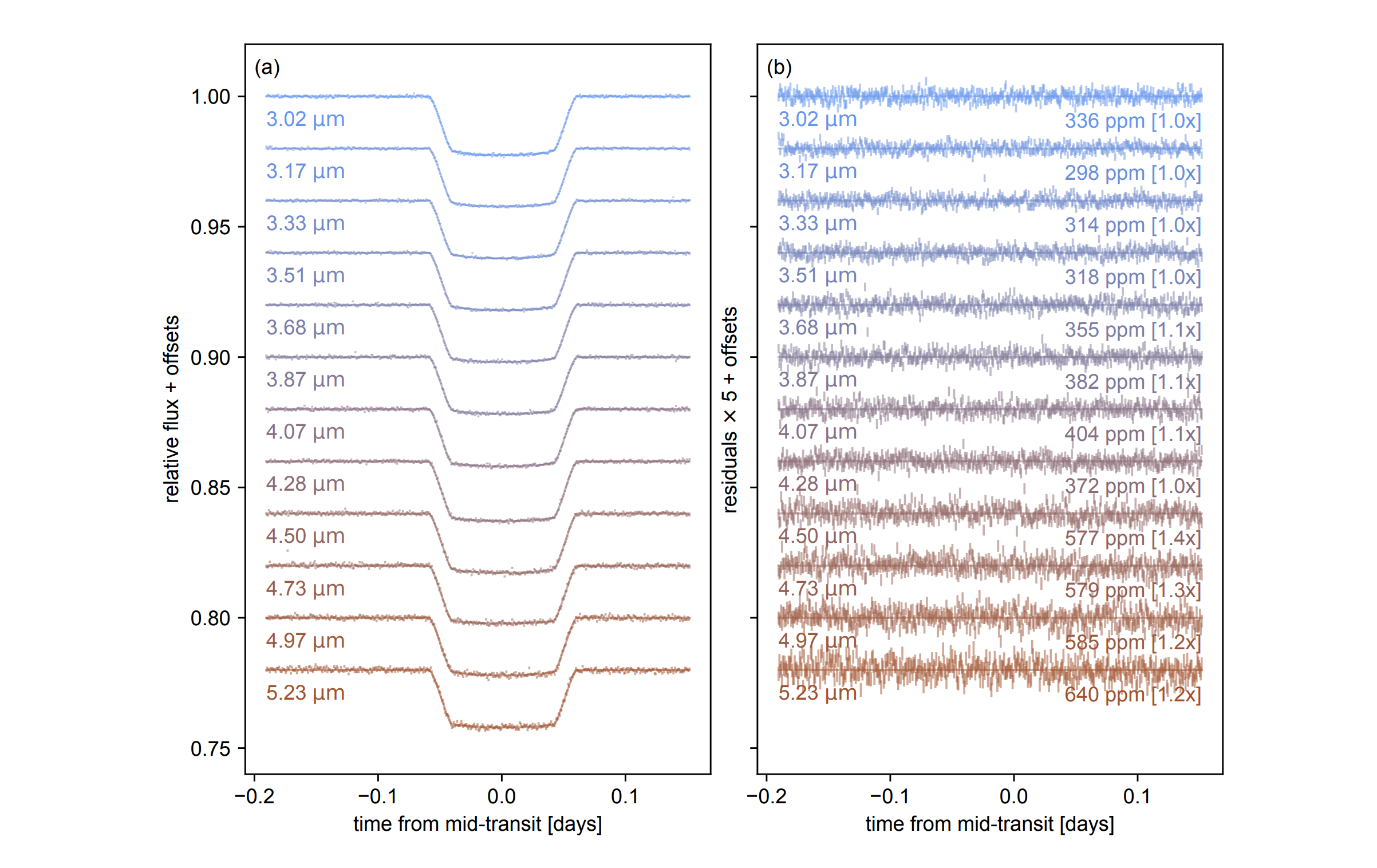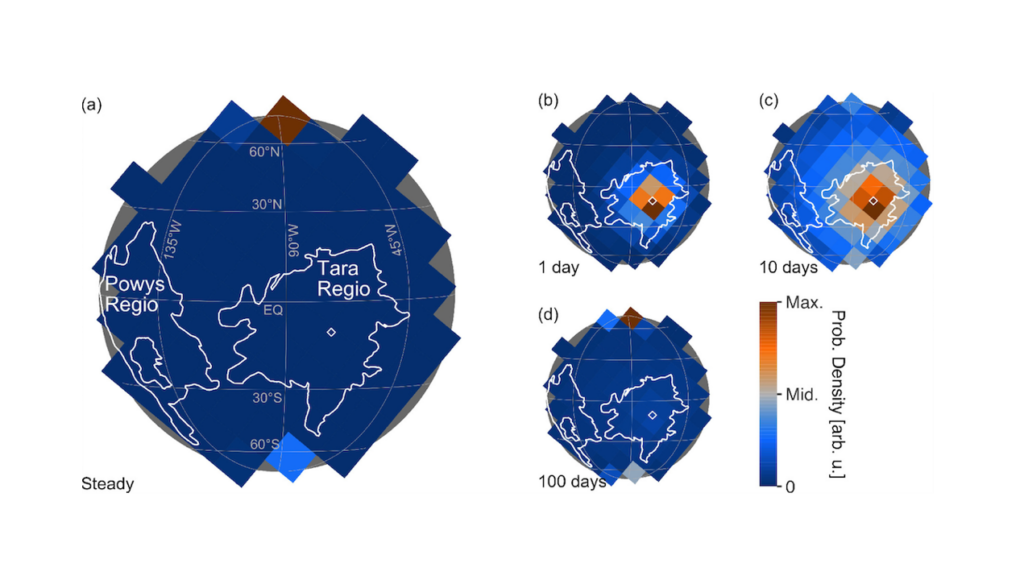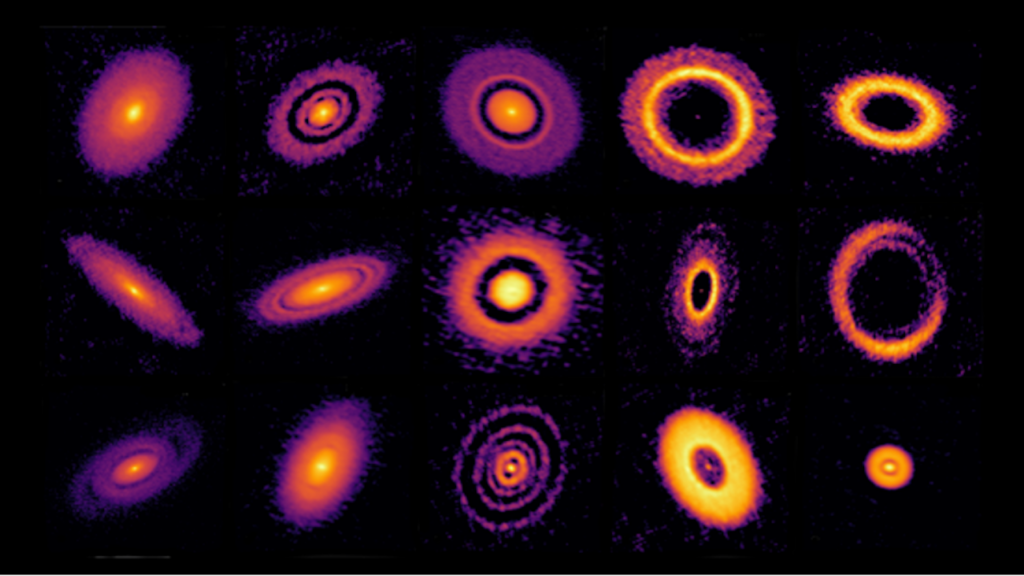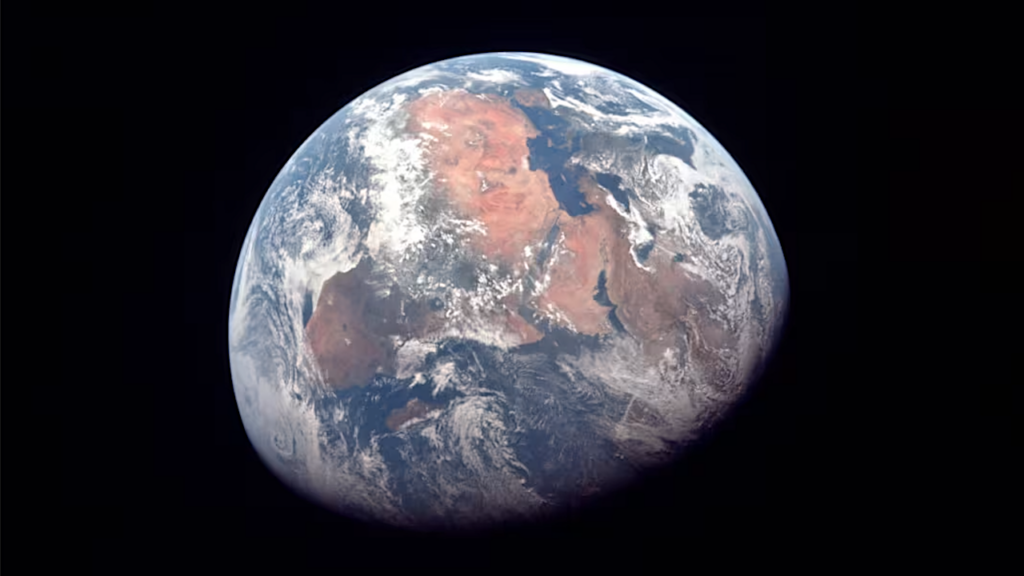Webb Space Telescope Identification Of Carbon Dioxide In An Exoplanet Atmosphere

Carbon dioxide (CO2) is a key chemical species that is found in a wide range of planetary atmospheres. In the context of exoplanets, CO2 is an indicator of the metal enrichment (i.e., elements heavier than helium, also called “metallicity”), and thus formation processes of the primary atmospheres of hot gas giants.
It is also one of the most promising species to detect in the secondary atmospheres of terrestrial exoplanets. Previous photometric measurements of transiting planets with the Spitzer Space Telescope have given hints of the presence of CO2 but have not yielded definitive detections due to the lack of unambiguous spectroscopic identification.
Here we present the detection of CO2 in the atmosphere of the gas giant exoplanet WASP-39b from transmission spectroscopy observations obtained with JWST as part of the Early Release Science Program (ERS). The data used in this study span 3.0 to 5.5 {\mu}m in wavelength and show a prominent CO2 absorption feature at 4.3 {\mu}m (26{\sigma} significance). The overall spectrum is well matched by one-dimensional, 10x solar metallicity models that assume radiative-convective-thermochemical equilibrium and have moderate cloud opacity.
These models predict that the atmosphere should have water, carbon monoxide, and hydrogen sulfide in addition to CO2, but little methane. Furthermore, we also tentatively detect a small absorption feature near 4.0 {\mu}m that is not reproduced by these models.
The JWST Transiting Exoplanet Community Early Release Science Team: Eva-Maria Ahrer (1 and 2), Lili Alderson (3), Natalie M. Batalha (4), Natasha E. Batalha (5), Jacob L. Bean (6), Thomas G. Beatty (7), Taylor J. Bell (8), Björn Benneke (9), Zachory K. Berta-Thompson (10), Aarynn L. Carter (4), Ian J. M. Crossfield (11), Néstor Espinoza (12 and 13), Adina D. Feinstein (6 and 14), Jonathan J. Fortney (4), Neale P. Gibson (15), Jayesh M. Goyal (16), Eliza M. -R. Kempton (17), James Kirk (18), Laura Kreidberg (19), Mercedes López-Morales (18), Michael R. Line (20), Joshua D. Lothringer (21), Sarah E. Moran (22), Sagnick Mukherjee (4), Kazumasa Ohno (4), Vivien Parmentier (23 and 24), Caroline Piaulet (9), Zafar Rustamkulov (25), Everett Schlawin (26), David K. Sing (25 and 13), Kevin B. Stevenson (26), Hannah R. Wakeford (3), Natalie H. Allen (13 and 14), Stephan M. Birkmann (27), Jonathan Brande (11), Nicolas Crouzet (28), Patricio E. Cubillos (29 and 30), Mario Damiano (31), Jean-Michel Désert (32), Peter Gao (33), Joseph Harrington (34), Renyu Hu (31 and 35), Sarah Kendrew (27), Heather A. Knutson (35), Pierre-Olivier Lagage (36), Jérémy Leconte (37), Monika Lendl (38), Ryan J. MacDonald (39), E. M. May (26), Yamila Miguel (28 and 40), Karan Molaverdikhani (41 and 42 and 19), Julianne I. Moses (43), Catriona Anne Murray (10), Molly Nehring (10), Nikolay K. Nikolov (12), D. J. M. Petit dit de la Roche (38), Michael Radica (9), Pierre-Alexis Roy (9), Keivan G. Stassun (44), Jake Taylor (9), William C. Waalkes (10), Patcharapol Wachiraphan (10), Luis Welbanks (20 and 45), Peter J. Wheatley (2 and 1), Keshav Aggarwal (46), Munazza K. Alam (33), Agnibha Banerjee (47), Joanna K. Barstow (47), Jasmina Blecic (48), S. L. Casewell (49), Quentin Changeat (50), K. L. Chubb (51), Knicole D. Colón (52), Louis-Philippe Coulombe (9), Tansu Daylan (53 and 54), Miguel de Val-Borro (55), Leen Decin (56), Leonardo A. Dos Santos (12), Laura Flagg (39), Kevin France (57), Guangwei Fu (17 and 13), A. García Muñoz (36), John E. Gizis (58), Ana Glidden (59 and 60), David Grant (3), Kevin Heng (61), Thomas Henning (19), Yu-Cian Hong (39), Julie Inglis (35), Nicolas Iro (62), Tiffany Kataria (31), Thaddeus D. Komacek (17), Jessica E. Krick (63), Elspeth K.H. Lee (64), Nikole K. Lewis (39), Jorge Lillo-Box (65), Jacob Lustig-Yaeger (26), Luigi Mancini (66 and 19 and 67), Avi M. Mandell et al. (32 additional authors not shown)
Comments: 27 pages, 6 figures, Accepted for publication in Nature, data and models available at https://doi.https://doi.org/10.5281/zenodo.6959427
Subjects: Earth and Planetary Astrophysics (astro-ph.EP)
Cite as: arXiv:2208.11692 [astro-ph.EP] (or arXiv:2208.11692v1 [astro-ph.EP] for this version)
https://doi.org/10.48550/arXiv.2208.11692
Focus to learn more
Submission history
From: Natalie Batalha Dr.
[v1] Wed, 24 Aug 2022 17:52:36 UTC (2,186 KB)
Full Paper https://arxiv.org/abs/2208.11692
Astrobiology, Astrochemistry








